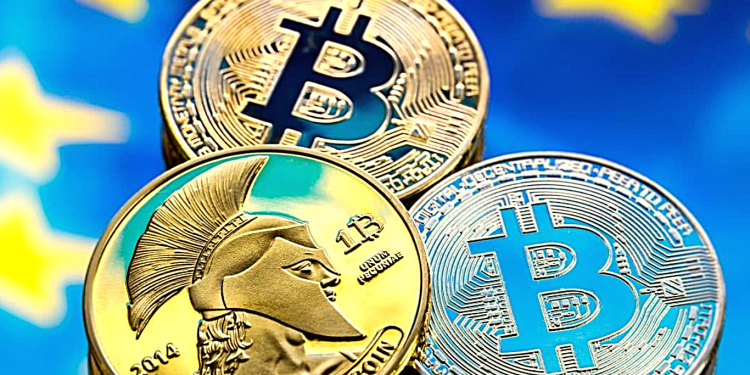- A recent CoinShares report highlights European investors’ stronger confidence in crypto compared to Americans, largely influenced by contrasting regulatory environments.
- Europe’s proactivity in crypto regulation, exemplified by the introduction of MiCA and advancements like the Bitcoin spot markets ETF, contrasts with the U.S.’s regulatory uncertainty and disputes.
- Despite Europe’s bullish trends, overall crypto investments remain bearish with Europe experiencing a month-long outflow of over $24 million, while the U.S. saw outflows of $67.5 million.
A recent CoinShares report highlighted that European investors, driven by more defined regulatory frameworks such as the MiCA directive, have shown increased confidence in the crypto domain. In contrast, the U.S., grappling with regulatory uncertainties, has exhibited a cautious approach.
To put this into perspective:
- European investors pumped $16 million into various crypto products in a week, while their American counterparts withdrew $14 million from the market.
- Germany spearheaded the European trend, accounting for inflows of $18.1 million.
- Despite a bullish week, Europe saw a monthly outflow exceeding $24 million, while the U.S. recorded a much steeper decline, with outflows reaching $67.5 million.
Regulation: The Heart of the Matter
Europe’s proactive stance towards crypto regulation is evident in its recent initiatives. The Markets in Crypto-Assets (MiCA) regulations, which will be enforced in December 2024, aims to provide clarity on various aspects of crypto assets. This includes their creation, services related to cryptocurrencies, stablecoins, and other digital assets.
Furthermore, Europe has witnessed other significant milestones:
- The launch of the continent’s first Bitcoin spot markets exchange-traded fund (ETF) by Amsterdam’s Jacobi FT Wilshire.
- The introduction of the Gnosis Pay visa-enabled crypto debit card.
On the flip side, the U.S. has been bogged down by regulatory challenges. It hasn’t greenlit significant crypto-related ETFs and remains embroiled in high-stakes lawsuits against crypto giants like Binance and Coinbase. Compounding the issue, regulatory bodies such as the U.S. Commodity Futures Trading Commission (CFTC) and the Securities and Exchange Commission (SEC) have been unable to find common ground, leading to further uncertainties.
The European Drive for Influence
Beyond regulations, Europe’s crypto industry has been proactive in influencing policy decisions. Over 40 crypto business leaders recently approached the European Union, advocating for balanced regulations that don’t jeopardize the industry’s growth. This move was in response to the EU’s proposals requiring crypto firms to disclose transaction details, which many believe would compromise user privacy.
Moreover, CoinShares, one of Europe’s most significant cryptocurrency asset managers, is expanding its reach to the U.S. market. By launching a hedge fund division, they aim to tap into the American investor base, signaling a European drive to influence and capitalize on global cryptocurrency trends.
The crypto landscape is continually evolving, with investor sentiments swayed by a host of factors. Presently, European investors, bolstered by a supportive regulatory environment, show greater confidence in digital currencies. In contrast, American investors remain cautious, awaiting regulatory clarity. How this dynamic will shape the future of the crypto world remains to be seen, but for now, Europe seems to be leading the charge.














